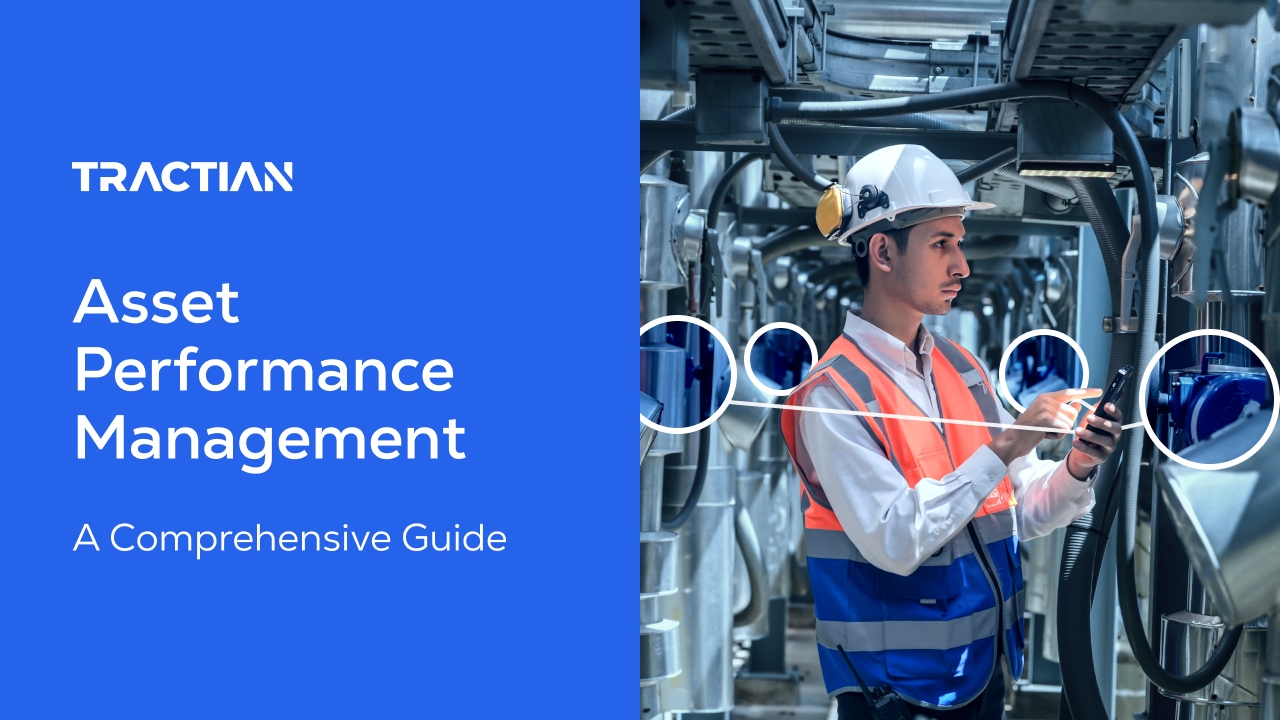Asset Performance Management (APM) is a strategy focused on optimizing the performance and reliability of industrial assets. It combines technology, data analytics, and predictive maintenance to ensure machinery and equipment operate efficiently, reducing downtime and extending asset lifespan.
APM isn’t just about monitoring-it turns raw data into actionable insights, allowing teams to prevent failures before they happen. By integrating real-time monitoring, APM empowers companies to make smarter data-driven decisions about maintenance and operations.

According to ARC Advisory Group, adopting APM can reduce unplanned downtime by up to 25% and boost asset availability by 30%. With such gains, it’s clear why APM is essential for staying competitive in today's industrial environment. What’s holding you back from adopting it?
Importance of Asset Performance Management
Asset Performance Management (APM) helps businesses maximize asset utilization, reduce downtime, and boost operational efficiency. By monitoring equipment in real-time, APM ensures machines run at peak performance, preventing costly failures and extending asset lifespan.
The reliance on real-time data and analytics is growing rapidly. With continuous data streams, APM enables teams to predict issues, optimize maintenance schedules, and avoid unnecessary repairs. This proactive approach cuts downtime and improves resource use.
For businesses, adopting APM is crucial to staying competitive. The combination of data-driven insights and optimized asset performance directly enhances productivity and profitability.
Key Components of APM
Understanding the core elements of Asset Performance Management (APM) is crucial to fully leveraging its benefits. Each component plays a vital role in ensuring that your assets perform optimally while reducing downtime and maintenance costs.
- Asset Health Monitoring: Continuous tracking of asset conditions is at the heart of APM. Sensors and real-time data help detect potential issues early, allowing maintenance teams to address problems before they escalate into costly failures.
- Predictive and Preventive Maintenance: Leveraging AI and machine learning, APM forecasts asset failures with high accuracy. This allows companies to schedule maintenance before breakdowns occur, drastically reducing unplanned downtime and repair costs.
- Performance Optimization: APM enhances operational efficiency by fine-tuning equipment settings and parameters. This leads to more efficient production processes, reducing energy consumption and increasing overall productivity.
- Reliability Engineering: Ensuring assets perform reliably over time is a critical aspect of APM. By focusing on asset reliability, companies can ensure that equipment operates without failure, delivering consistent performance throughout its lifecycle.
- Each of these components works together to ensure that APM delivers maximum value, from early issue detection to improved long-term reliability.
Benefits of Implementing APM
Implementing Asset Performance Management (APM) delivers tangible benefits that can transform how businesses manage their assets. From reducing costs to improving decision-making, the impact is significant across every level of operations.
- Reduced Maintenance Costs: APM allows companies to leverage predictive maintenance, cutting repair costs by addressing potential failures before they happen. By preventing breakdowns, companies not only reduce repair expenses but also extend the lifespan of their assets. In fact, organizations using predictive maintenance report a 20-30% reduction in maintenance costs.
- Increased Operational Efficiency: With APM, businesses can proactively manage their assets, preventing unexpected downtime and optimizing the use of resources. This approach ensures that machinery operates at peak efficiency, leading to smoother operations and reduced energy consumption.
- Improved Safety and Compliance: By continuously monitoring asset conditions, APM helps detect and prevent safety risks before they become serious hazards. This ensures that companies stay compliant with industry regulations, reducing the likelihood of accidents and penalties.
- Enhanced Decision-Making: Data-driven insights from APM provide businesses with a clear understanding of asset performance. This allows for smarter, more informed decisions, improving overall efficiency and profitability. A study by McKinsey found that companies using APM can increase asset availability by up to 30%, directly influencing operational success.

How APM Works in Different Industries
Asset Performance Management (APM) adapts to the unique needs of various industries, delivering tailored solutions to improve performance and reduce downtime. Whether it’s manufacturing or energy, APM offers a data-driven approach that maximizes asset reliability and efficiency.
Manufacturing: In the manufacturing sector, APM plays a crucial role in monitoring equipment health and performance. By using real-time data and predictive analytics, manufacturers can detect issues early, prevent costly breakdowns, and minimize downtime. This proactive approach not only extends the lifespan of machinery but also boosts overall productivity by ensuring smooth, uninterrupted operations.
Energy and Utilities: For the energy and utilities industry, APM is key to optimizing asset performance and preventing outages. By continuously monitoring critical infrastructure and analyzing data, APM helps identify inefficiencies and potential failures before they occur. This ensures a stable energy supply, enhances operational efficiency and reduces energy waste, ultimately driving cost savings and sustainability.
Steps to Building an APM Strategy
Developing an effective Asset Performance Management (APM) strategy requires a structured approach, ensuring that businesses focus on the right assets and tools to maximize efficiency. Here’s a simple step-by-step guide to get started.
- Step 1: Identify Critical Assets: Begin by prioritizing the most important assets for your operations. These are the machines or equipment that, if they fail, would have the greatest impact on productivity and profitability. Focusing on these assets ensures that resources are allocated where they’re needed most.
- Step 2: Implement APM Software: Next, integrate systems like Computerized Maintenance Management Systems (CMMS) or Enterprise Asset Management (EAM) software. These tools allow you to manage and monitor your critical assets effectively, providing real-time data and insights needed to drive informed decisions.
- Step 3: Use Predictive Maintenance: Leverage advanced analytics and machine learning to predict potential failures before they occur. By employing predictive maintenance techniques, businesses can mitigate risks, reduce downtime, and avoid costly repairs, keeping operations running smoothly.
- Step 4: Monitor Performance with KPIs: Finally, track key performance indicators (KPIs) like Mean Time Between Failures (MTBF) to measure the success of your APM strategy. These metrics provide valuable insights into asset reliability and help fine-tune maintenance efforts for continuous improvement.
APM in the Era of IoT and Industry 4.0
Asset Performance Management (APM) is rapidly transforming with the rise of IoT and Industry 4.0 technologies. Connected devices now allow real-time data collection from assets, providing continuous insights into equipment health. This connectivity enables faster responses and more precise decision-making.
AI and machine learning take APM further by analyzing data at scale, predicting failures, and optimizing maintenance schedules. These technologies help companies reduce downtime and operate more efficiently.
Driving Performance with TRACTIAN's APM Solutions
TRACTIAN’s Asset Performance Management (APM) platform improve how industrial facilities manage and optimize their assets.
Leveraging cutting-edge AI and real-time condition monitoring, TRACTIAN empowers maintenance teams to preemptively address potential failures, significantly reducing unplanned downtime and maintenance costs.
By providing actionable insights into equipment health, TRACTIAN’s APM helps industries transition from reactive to predictive maintenance strategies, ensuring optimal asset utilization and operational efficiency
Conclusion
Asset Performance Management (APM) is a powerful strategy for improving asset reliability, reducing maintenance costs, and boosting overall operational efficiency. By leveraging real-time data, predictive maintenance, and advanced analytics, APM ensures that assets perform at their best, minimizing downtime and extending equipment lifespan.
For businesses looking to stay competitive and future-ready, adopting APM strategies is essential. It’s not just about preventing failures-it's about driving long-term success through smarter, data-driven decisions. Now is the time to embrace APM and unlock the full potential of your operations.


